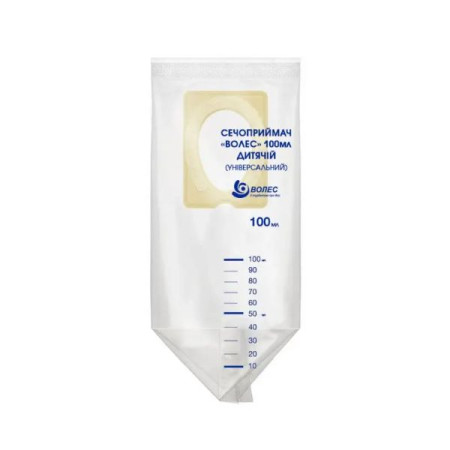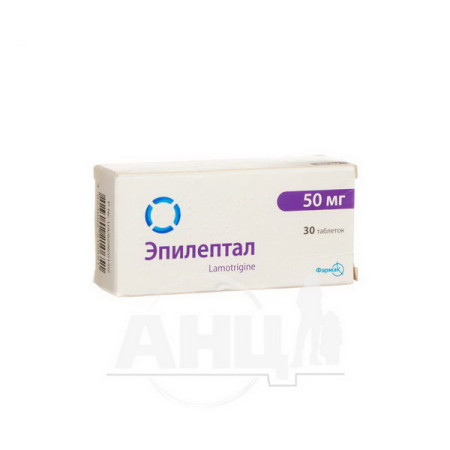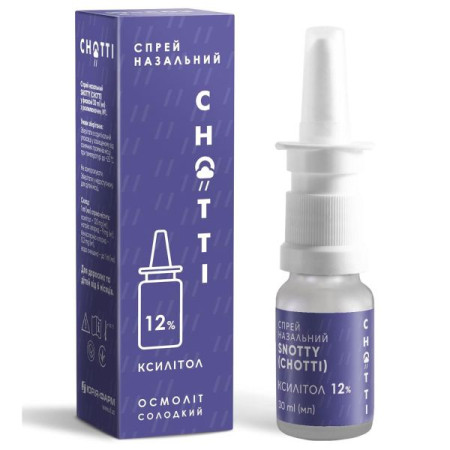Hypothiazide tablets 25 mg blister No. 20

Pharmacological properties
The primary mechanism of action of thiazide diuretics is to increase diuresis by blocking the reabsorption of sodium and chloride ions at the beginning of the renal tubules. In this way, they increase the excretion of sodium, chloride and, consequently, water. The excretion of other electrolytes, namely potassium and magnesium, is also increased. At maximum therapeutic doses, the diuretic/natriuretic effect of all thiazides is approximately the same. They also reduce the activity of carbonic anhydrase by increasing the excretion of bicarbonate ion, but this effect is usually weak and does not affect the pH of the urine. Hydrochlorothiazide also has hypotensive properties. Thiazide diuretics do not affect normal blood pressure.
Hydrochlorothiazide is not completely, but quite quickly absorbed from the digestive tract. An increase in sodium and urine excretion is observed after 2 hours and reaches a maximum value approximately 4 hours after administration. This effect persists for 6-12 hours. After oral administration at a dose of 100 mg, the maximum concentration in the blood plasma is reached after 1.5-2.5 hours. At maximum diuretic activity (approximately 4 hours after administration), the concentration of hydrochlorothiazide in the blood plasma is 2 μg / ml. Binding to plasma proteins is 40%. The primary route of elimination is renal (filtration and secretion) in unchanged form. The half-life in patients with normal renal function is 6.4 hours, in patients with moderate renal failure - 11.5 hours, and in patients with creatinine clearance less than 30 ml / min - 20.7 hours. Hydrochlorothiazide crosses the placental barrier and is excreted in breast milk.
Indication
To eliminate edema in congestive heart failure, cirrhosis of the liver with ascites, premenstrual syndrome, therapy with corticosteroids or estrogens;
for edema associated with various forms of renal dysfunction, such as nephrotic syndrome, acute glomerulonephritis and chronic renal failure;
for the treatment of hypertension as monotherapy or in combination with other antihypertensive drugs (for more severe forms of hypertension);
to reduce polyuria (paradoxically), mainly in nephrogenic diabetes insipidus;
to reduce hypercalciuria.
Application
The dose of the drug is selected individually (the minimum effective dose is established under constant medical supervision).
The tablets should be taken after meals.
The usual initial dose for the elimination of edema is 25-100 mg 1 time per day or 1 time per 2 days. Depending on the clinical effectiveness, the dose is reduced to 25-50 mg 1 time per day or 1 time per 2 days. In severe cases, the drug can be used in an initial dose of up to 200 mg/day.
For premenstrual edema, the usual dose is 25 mg/day and is used from the onset of symptoms until the onset of menstruation.
As an antihypertensive agent, hydrochlorothiazide is usually prescribed in an initial daily dose of 25-50 mg in one dose as monotherapy or in combination with other antihypertensive drugs. For some patients, an initial dose of 12.5 mg is sufficient both as monotherapy and in combination with other antihypertensive drugs. The drug should be used in the minimum effective dose, not exceeding 100 mg/day. If Hypothiazide is combined with other antihypertensive drugs, it may be necessary to reduce the dose of the other drug in order to prevent excessive reduction in blood pressure.
The hypotensive effect of hypothiazide is manifested within 3-4 days, but it may take up to 3-4 weeks to achieve the optimal effect. After the end of treatment, the hypotensive effect persists for about 1 week.
For nephrogenic diabetes insipidus, the recommended daily dose is 50-150 mg in several doses.
The dose of the drug for children should be set depending on the child's body weight. The usual daily dose is 1-2 mg/kg body weight or 30-60 mg per 1 m 2 of body surface and is taken once a day. The daily dose for children under 2 years of age is 12.5-37.5 mg, 2-12 years - 37.5-100 mg per day.
Contraindication
Hypersensitivity to the drug or to other sulfonamides, anuria, severe renal (creatinine clearance below 30 ml/min) or hepatic insufficiency, breastfeeding period.
Side effects
Electrolyte imbalance: hypokalemia, hypomagnesemia, hypercalcemia and hypochloremic alkalosis, which manifest as dry mouth, thirst, arrhythmia, changes in mentality, mood, convulsions and myalgia, nausea, vomiting, increased fatigue or weakness. Hypochloremic alkalosis can cause the development of hepatic encephalopathy or hepatic coma. Hyponatremia is possible, which manifests itself as confusion, convulsions, soporific state, slowing of the thinking process, fatigue, increased excitability, convulsions.
Metabolic disorders: hyperglycemia, glucosuria. In patients with asymptomatic disease, Hypothiazide can cause the development of hyperuricemia and gout attacks.
The use of hypothiazide may impair glucose tolerance, resulting in the manifestation of latent diabetes mellitus. When used in high doses, it may lead to an increase in serum lipid levels.
Gastrointestinal: cholecystitis or pancreatitis, cholestatic jaundice, diarrhea, sialadenitis, constipation, anorexia.
Neurological manifestations: dizziness, transient blurred vision, headache, paresthesia.
Hematological manifestations (very rare): leukopenia, agranulocytosis, thrombocytopenia, hemolytic anemia, aplastic anemia.
Hypersensitivity reactions: urticaria, purpura, necrotizing vasculitis, Stevens-Johnson syndrome, respiratory distress syndrome (including pneumonitis and non-cardiogenic pulmonary edema), photosensitization, anaphylactic reactions (up to shock).
Others: decreased potency, impaired renal function, interstitial nephritis.
Special instructions
With a long course of treatment, regular monitoring for the appearance of clinical symptoms of water and electrolyte imbalance is necessary, especially in patients at high risk - patients with impaired heart and liver function. Clinical symptoms of water and electrolyte imbalance are: severe vomiting, dry mouth, thirst, weakness, drowsiness, anxiety, muscle pain, cramps, muscle weakness, hypotension, oliguria, tachycardia, gastrointestinal disorders.
Due to the increased loss of potassium and magnesium during treatment (the serum potassium level may fall below 3.0 mmol/l), it is necessary to compensate for the loss of potassium and magnesium. Particular caution should be exercised in patients with heart failure, impaired liver function or in patients receiving treatment with digitalis glycosides. Hypokalemia can be avoided by using potassium-containing supplements or by recommending the patient a diet rich in potassium (fruits, vegetables), especially in cases of increased potassium loss (increased diuresis, prolonged treatment) or simultaneous treatment with digitalis glycosides or GCS drugs.
Hypothiazide increases the excretion of magnesium in the urine, which can lead to the development of hypomagnesemia.
In case of reduced renal function, monitoring of creatinine clearance is necessary. In patients with renal disease, the drug may cause azotemia and the development of cumulative effects. If renal dysfunction is evident, with the development of oliguria, the possibility of drug withdrawal should be considered. Patients with impaired liver function or progressive liver disease should be prescribed Hypothiazide with caution, since even a slight disturbance of water and electrolyte balance, as well as the level of ammonium in the blood serum, can cause the development of hepatic coma.
In case of severe atherosclerosis of the cerebral and coronary arteries, the use of the drug requires special caution.
Treatment with hypothiazide may impair glucose tolerance. During long-term treatment with manifest and latent diabetes mellitus, systematic monitoring of carbohydrate metabolism is necessary; it may be necessary to change the dose of hypoglycemic drugs.
It is necessary to regularly monitor the condition of patients with impaired uric acid metabolism. Alcohol, barbiturates, narcotics enhance the orthostatic hypotensive effect of hypothiazide.
With prolonged therapy, in some cases, pathological changes in the function of the parathyroid gland were observed, accompanied by hypercalcemia and hypophosphatemia. Hypothiazide can reduce the amount of iodine bound to plasma proteins without showing signs of thyroid dysfunction.
The use of hypothiazide may cause gastrointestinal disorders in patients with lactose intolerance due to the presence of lactose in the drug.
During the first days of taking the drug (the duration of this period is determined individually), it is forbidden to drive a car and perform work that requires increased attention.
During pregnancy, the drug can be prescribed only in case of extreme necessity, with careful weighing of the therapeutic benefit for the mother and the potential risk to the child, since the drug reduces the volume of blood plasma and blood supply to the placenta, and also penetrates the placental barrier. Thus, there is a risk of fetal or neonatal jaundice, thrombocytopenia and other negative consequences.
The drug penetrates into breast milk, so if the use of the drug is absolutely necessary, breastfeeding should be discontinued.
The use of hypothiazide may affect the results of laboratory tests: reduce the level of iodine bound to proteins in the blood plasma; increase the concentration of bilirubin in the blood serum.
Before conducting tests for parathyroid function, Hypothiazide should be discontinued.
Interactions
Simultaneous use of the drug with lithium salts should be avoided (renal clearance of lithium is reduced, therefore its toxicity increases).
It is necessary to use Hypothiazide with caution with the following drugs:
antihypertensive agents (their effect is potentiated, there may be a need for dose adjustment);
cardiac glycosides (hypokalemia and hypomagnesemia associated with the action of thiazide diuretics may increase the toxicity of digitalis drugs);
amiodarone (its simultaneous use with thiazides may lead to an increased risk of arrhythmias associated with hypokalemia);
oral antidiabetic drugs (their effectiveness decreases, hyperglycemia may develop);
GCS, calcitonin (increase hypokalemia);
NSAIDs (may weaken the diuretic and hypotensive effect of hypothiazide);
amantadine (amantadine clearance may decrease, leading to an increase in its concentration in blood plasma and increased toxicity);
cholestyramine (may inhibit the absorption of hypothiazide in the gastrointestinal tract);
alcohol, barbiturates and narcotics, which increase the severity of orthostatic hypotension.
Overdose
The main consequence of hypothiazide overdose is acute dehydration and loss of electrolytes, which are manifested by the following symptoms: tachycardia, hypotension, shock; weakness, dizziness and calf muscle spasms, paresthesia, impaired consciousness, fatigue; nausea, vomiting, thirst; polyuria, oliguria or anuria (due to hemoconcentration); hypokalemia, hyponatremia, hypochloremia, alkalosis, increased blood urea nitrogen (especially in patients with renal failure).
There is no specific antidote. Gastric lavage and administration of activated charcoal are recommended to reduce drug absorption. In case of hypotension or shock, volume replacement and electrolyte (potassium, sodium) deficit should be corrected. Fluid and electrolyte balance (especially serum potassium) and renal function should be monitored until normalization of parameters.
Storage conditions
In a place protected from light at a temperature of 15-25 °C.
There are no reviews for this product.
There are no reviews for this product, be the first to leave your review.
No questions about this product, be the first and ask your question.


















